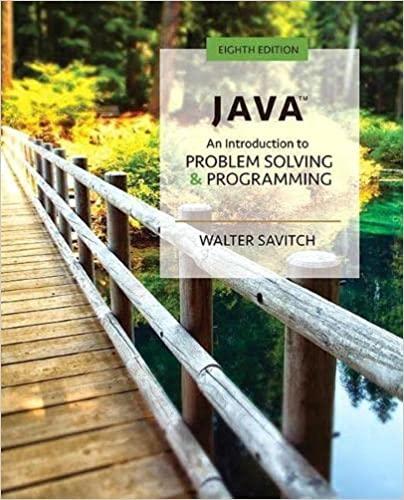Question
JAVA In this you are to implement a simplified version of the Flesch reading-ease test. Create a program called FleschReadingEase that meets the following requirements
JAVA
In this you are to implement a simplified version of the Flesch reading-ease test. Create a program called FleschReadingEase that meets the following requirements
1. Takes one argument from the command line. The name of the text file to read
a. If an invalid number of arguments is provided print
Usage: java FleschReadingEase filename
b. If the file doesn't exist print
FILE NOT FOUND
2. Implements the algorithm described below and prints the computed score
3. To help you develop the code you will be required to implement the following methods (all public and static):
a. getTokensFromFile
i. Input parameter: String
● Filename to be read
ii. returns: String[]
● Tokens of text in file
iii. Note: you need to implement error handling. Have the method throw FileNotFound Exception.
● Your main method will have a try/catch block to handle any exception thrown by this method. See the class notes on using a try/catch block.
b. removeNonAlphabetCharacters
i. Input parameter: String
● The original string possibly containing alphabet and non-alphabetic characters
ii. returns: String
● A new string with all non-alphabetic characters removed
● “Hello!” should return “Hello”
● “!@#$!goodbye<>:” should return “goodbye”
You may find the Character.isLetter method helpful
c. getSentenceCount
i. Input parameter: String[]
● Word tokens
ii. returns: int
● Count of sentences using word counting algorithm listed below
d. getSyllableCount
i. Input parameter: String
● A word
ii. returns: int
● Count of syllables in word using the word counting algorithm listed below
e. getFleschScore
i. Input parameter: String[]
● Tokenized input text
ii. returns: int
● Calculated Flesch score using algorithm listed below
Algorithm Details
● Count all tokens in the file. A token is any sequence of characters delimited by white space, whether or not it is an actual English word. There are multiple ways to do this. However, to make grading consistent you are to use a Scanner to generate tokens (which we assume to be words) using white space as the delimiter.
● Count all syllables in each token. Use the following rules:
○ Vowels are: aeiouyAEIOUY
○ Each group of two vowels counts as one syllable (for example, the "ea" in "real" is one syllable.
◉ Following our rules, the word “you” has two(2) syllables. The grouping of “yo” and the “u”
○ Each individual vowel that is not adjacent counts as one syllable ( for example, the "e .. a" in "regal" counts as two syllables).
○ However, an "e" or "E" at the end of a word doesn't count as a syllable.
◉ Note: you will need to remove punctuation before counting syllables
◉ Hint: use the removeNonAlphabetCharacters method
○ Also, each token has at least one syllable, even if the previous rules produce a count of 0.
○ Note: The above rules may not work in all cases and may produce incorrect syllable counts. There is no simple syllable counting method that works in all cases. These syllable rules apply to this assignment only.
● Count all sentences. A sentence is ended by a period, colon, semicolon, question mark, or exclamation mark .:;?!. Assume the number of times these characters appear is equivalent to the number of sentences. ONLY count if the last character in the token is one of the punctuation marks.
● The score is computed by the following formula rounded to the nearest integer.
Scores can be interpreted as shown in the table below.
Score | School level (US) | Notes |
100 – 90 | 5th grade | Very easy to read. Easily understood by an average 11-year-old student. |
90 – 80 | 6th grade | Easy to read. Conversational English for consumers. |
80 – 70 | 7th grade | Fairly easy to read. |
70 – 60 | 8th & 9th grade | Plain English. Easily understood by 13- to 15-year-old students. |
60 – 50 | 10th to 12th grade | Fairly difficult to read. |
50 – 30 | College | Difficult to read. |
30 – 10 | College graduate | Very difficult to read. Best understood by university graduates. |
10 – 0 | Professional | Extremely difficult to read. Best understood by university graduates. |
Step by Step Solution
There are 3 Steps involved in it
Step: 1
heres a Java program called FleschReadingEase that meets the specified requirements aimport javaioBufferedReader import javaioFileReader import javaio...
Get Instant Access to Expert-Tailored Solutions
See step-by-step solutions with expert insights and AI powered tools for academic success
Step: 2

Step: 3

Ace Your Homework with AI
Get the answers you need in no time with our AI-driven, step-by-step assistance
Get Started


